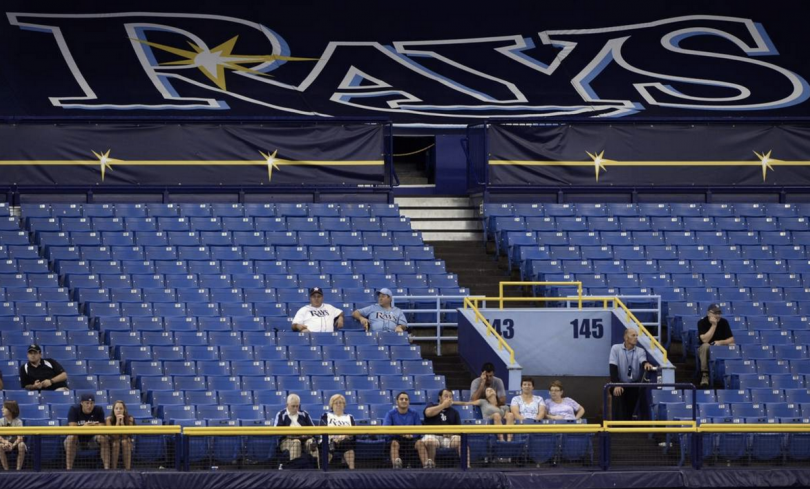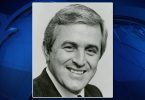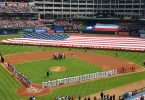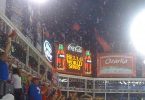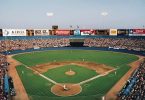Lost in all the jaw-flapping and the social media outrage of Major League Baseball’s announcement regarding the troubled Tampa Bay franchise was a not-so-subtle irony.
Whether it was legitimate or just another stadium ploy, baseball gave Rays ownership permission last week to explore the feasibility of splitting future seasons between St. Petersburg and Montreal.
The team would play its early season games based in the warmth of Florida, that eternally popular migratory snowbird haven, and then head up north once the ice melts.
It’s a poor idea and I believe it will never happen, but that’s not the compelling point here.
The better storyline is that for the Tampa Bay area, the baseball shoe is finally on the other foot.
I don’t know why people don’t go to Rays baseball games. The team is 11 games over .500 and leads the American League wild card race. The Rays have posted six 90-win seasons over the past 11 years.
And yet, they remain largely ignored in their giant sepulcher of a stadium. Tampa Bay ranks 29th of 30 in attendance, averaging only 14,545 per game.
Tropicana Field, for sure, is no Field of Dreams. The Trop’s circus tent fiberglass roof – buttressed by four concentric rings, each with its own ground rule – diminishes the ambience of MLB’s lone non-retractable domed stadium. The tarps that cover portions of the upper deck don’t help.
The problem with Tropicana Field, however, is its location, not its nuances. The Trop is in St. Petersburg – smaller, older and less centrally located than its more millennial-friendly sibling Tampa.
St. Petersburg has art museums, a vibrant waterfront, Saturday Morning Markets and pink hotels. But its median age – 42.6 years, compared to Tampa’s 34.8 – casts a gray shadow over it. The city has long been called “heaven’s waiting room.”
It’s 22.5 miles from downtown Tampa to The Trop. The geography doesn’t seem to be all that daunting. After all, Arlington’s two big stadiums are 17.8 miles from downtown Dallas, 15.5 miles from Fort Worth – not exactly a quick hop.
Yet, the Rangers, even in a lame duck season at Globe Life Park, are 16th in MLB attendance, drawing nearly twice what the 11-games-over Rays are.
And here baseball is, offering the chilly but welcoming shoulder of Montreal as a Tampa Bay exile destination.
Funny how things can come full circle.
It was a warm day in August of 1988, when then-owner Eddie Chiles, contending he was getting lean on cash, announced he had reached an agreement to sell the Rangers to Frank Morsani, a Tampa auto dealer and investor.
Morsani had long been part of a group that wanted to bring major league baseball to Tampa. The plan was to build a privately financed ballpark on the vast, empty Dale Mabry Boulevard land that serves as parking lots for what is now the Tampa Bay Bucs’ Raymond James Stadium.
Years before the deal with Chiles, Morsani had acquired 42% of the Minnesota Twins with the intent of moving them to Tampa. Commissioner Bowie Kuhn intervened, however, and convinced – a lawsuit later called it “coerced” – Morsani to sell his shares to Carl Pohlad in 1984, with the promise that the Tampa group would be at the top of the list when baseball next expanded.
Morsani tried to jump the line with his deal for the Rangers.
Chiles was 78 in that summer of 1988. And oil had dropped from $37 a barrel in 1980 to $14. He wanted out.
But when he made his announcement, Chiles naively assured fans here that the new owners had “every intention” of keeping the team in Texas.
What saved the Rangers from being moved was that Edward Gaylord, baron of the Gaylord media empire, owned 33% of the team, and he smelled the rat in the deal all the way from Oklahoma.
Baseball owners far from savvy of the coming media revolution, were not fond of Gaylord. His company owned KTVT-Channel 11, at the time an independent, so-called “regional superstation.”
The owners feared Gaylord would put the Rangers on nationwide TV, as WGN had done with the Chicago Cubs and Ted Turner’s WTBS had done with the Atlanta Braves.
Morsani’s group had to wait while baseball sorted it out. The delay was long enough for local baseball treasure Dr. Bobby Brown to help put together a purchase group that included, among others, Richard Rainwater, Rusty Rose, Tom Schieffer and a 42-year-old from West Texas named George W. Bush, also known as the son of the President.
MLB owners approved. The citizens of Arlington soon approved the sales tax hike that helped fund construction of The Ballpark in Arlington. And Morsani moved on to try to poach another team.
The list is long. Over the years, until the area finally was awarded the Devil Rays expansion franchise in 1998, Tampa Bay became the threatened venue of choice for every major league team wanting an attendance boost or a new stadium.
The San Francisco Giants. The Chicago White Sox. The Seattle Mariners. The Oakland A’s.
They all used the Tampa Bay name as a possible destination – and always with favorable results, frequently with new ballparks.
Anybody else see the irony that Tampa’s lust for major league baseball led to new stadiums for other cities, while its own ballpark situation may cause it to lose its eventual team?
No sympathy here. I’ve always felt that Morsani, though he operated within his legal rights, attempted to take advantage of a semi-desperate senior citizen. Chiles passed away in 1993, eight months before the new ballpark opened. He was 83.
When Tampa Bay was passed over in the 1993 expansion in favor of Denver and Miami, Morsani’s Tampa Bay Baseball Group sued MLB. The suit was settled 11 years later, apparently in Morsani’s favor since baseball owners requested that the financial terms remain confidential.
A group headed by Vince Naimoli was awarded the Devil Rays franchise in 1998, bringing the major leagues to the then-Florida Suncoast Dome.
Which is where the problem remains.
Much has been written about the alleged air-tight lease that the club has with the city of St. Petersburg. The agreement binds the Rays to the Tampa Bay area until 2027, with no listed concessions for departure before then. Baseball pundits – and Rays fans, the hundreds of them – have interpreted that to mean the penalties would be so severe that the franchise is locked into The Trop for the next eight years.
But everything has its price. A threat to half-move to Canada seems like just another strategy by current owner Stuart Sternberg to circumvent the stringent lease.
On a recent trip to Quebec, I discovered that there are still a lot of Expos fans. All purported national pride aside, Montrealers aren’t inclined to pull for Toronto in anything – NBA Finals and baseball, included. You can still buy an Expos souvenir cap, if you want one.
City leaders, though, led by Seagram heir Stephen Bronfman, seem to realize that their best hope for a return to baseball is a new stadium in Montreal’s Peel Basic area built with private and provincial funding.
I sorta doubt the Tampa Bay announcement, therefore, knocked Celine Dion’s Vegas retirement off the front pages.
It’s hard to blame commissioner Rob Manfred’s office for the announcement. There are 29 MLB owners who are probably fed up with the embarrassment in Tampa Bay. The Rays are drawing 14-thousand a game, receiving revenue-sharing money each year, and where exactly are they spending it? The franchise has spent $65 million on free agent contracts over the past three years and has signed only two players to as long as two-year contracts.
The Rangers, despite a public admission of free agent restraint, have spent twice that. The Yankees spent $124 million last off-season alone.
Franchises have moved before. It’s probably time for one to move again and let the lawyers in Florida figure out the penalty price.
Consider it baseball karma.

